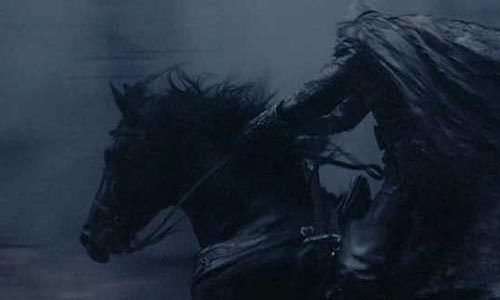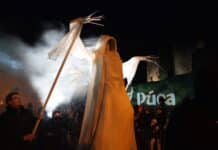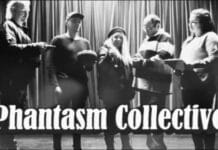Ireland is home to some of the scariest places in the world with every kind of apparition and haunting you can think of in abundance. ANN MASSEY tells us of Ireland’s most frightening headless ghosts.

Check out these Irish headless ghosts
British Barracks, Granard, County Longford
Captain Blundell was in command and was the epitome of the British Officer. The morning after a function the Captain failed to show up for parade. Soldiers broke into his locked chamber to find his severed head behind the door and bloody corpse on the floor. Despite this his death was ruled a suicide. His headless ghost now rides through Granard at midnight on a pure black horse, seemingly not resting until murder is proven.
Jones Road, Drumcondra, Dublin 3
Buck Jones was well known in social circles in Dublin. He acquired the large property known as Clonliffe House and continued his education abroad. Upon his return, as well as receiving the title of City Sheriff, the young man set up his own theatre company. Due to unscrupulous peers, Jones become destitute and ended up in debtor’s prison before dying penniless and alone. His headless shade can be seen riding on the back of a white horse, perhaps seeking better times.
Kildinan Castle, Kildinan, County Cork
Kildinan Castle was a former grand house and the owner was respected and very protective of his reputation. A peddler called to the estate selling wares. He proceeded to cheat the gentleman who feeling betrayed, ordered the castle guard to cut off the peddlers head. It was placed on a spike at the entrance to the grounds as a warning to others. The peddler’s headless spirit remains trapped within the house.
Blackwater Bridge, between Sneem and Kenmare, County Kerry
Witnesses have seen headless apparitions for generations, however one account tells of a local trying to deliver a letter. A spectral being attacked him as he tried to cross the bridge and the man futilely tried to fend the ghost off with his sword. As he was about to concede to the horror before him, a huge headless man ran across the bridge and up the cliff side. The attacker lost interest in the poor messenger and chased after the decapitated ghost, both disappearing into the night. The headless apparition is still seen regularly.
Grangemellon Castle, Grangemellon, County Kildare
Colonel John St Leger was known as ‘Handsome Jack’ and was painted by Gainsborough. As well as being Governor of Ceylon and the owner of Grangemellon Castle by the age of 26, he was also a member of the notorious Hellfire Club. At the peak of his career and popularity he died suddenly while stationed in Madras. He can now be seen at Grangemellon in an ethereal coach, being pulled by four horses with a Headless coach driver and headless footmen.
Wicklow Head Lighthouse, Dunbur Head, County Wicklow
In the middle of the nineteenth century a young woman of Dunbur Head had become betrothed. A jealous former lover chased her into the Lighthouse and in a frenzied attack, decapitated the poor lady with a scythe. Her headless spirit remains tormented on the stairs of the lighthouse, unable to comprehend her heinous murder and move on.
Roper’s Rest, Blackpitts Road, Dublin
The residence on Blackpitts Road was originally home to the 1st Viscount of Baltinglass, Thomas Roper. The place got the name of Roper’s Rest, after one of the Roper family was found decomposing, having died under ghastly conditions several days previously.
During the winter months, locals fearfully see a headless horseman riding along the area of Roper’s Rest after dark.
Dún an Óir, Dingle, County Kerry
During the 2nd Desmond Rebellion, 600 or so Rebellion and Papal Troops were taken to a field now known as ‘Gort a Gherradh’ or ‘The Field of Cutting’ for execution. Every last man was put to his knees and beheaded. The heads were buried together in a field and the bodies thrown into the sea.
The field in which the heads of the soldiers are buried has been named ‘Gort na gCeann’ or ‘Field of Heads’. The harsh erosion of the Atlantic coast is said to have brought skulls and skeletons forth from their burial site and on the anniversary of the massacre voices cry out in Spanish, and on the wind the horrific stench of rotting flesh is carried out to sea.







